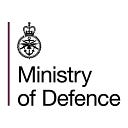Better to die than be a coward: The Gurkha Brigade
For over 200 years now, individuals from Nepal have been recruited into the British Army. The Gurkhas have supported worldwide across a range of skills ever since.
Here is everything you need to know 👇
The Gurkhas are soldiers from Nepal who have been recruited into the British Army. They have served the British Crown for more than 200 years and is a rich heritage marked by excellence and sacrifice.
They are known for being as fearless in combat as they are good-natured in their day-to-day life.
“Better to die than be a coward” is the motto of these world-famous soldiers.
The bravery of these Nepalese soldiers has not gone unnoticed, to date, the regiment have received 26 Victoria Crosses — Britain’s highest award for bravery.
The Gurkhas’ mission
“To serve as an integral part of the British Army whilst retaining its Nepalese identity and culture, and adhering to the terms and conditions of Gurkha service”.
Modern-day Gurkhas
Today the Brigade of Gurkhas remains an important part of the British Army, providing well-trained and adaptable units, who are deployable across a range of operations and environments.
For the last 200 years, the Gurkhas have been served the British Crown in over 30 major conflicts. This commitment remains to date.
There are currently Gurkhas deployed worldwide on operations and exercises, from operations in Afghanistan to Short Term Training Teams (STTT) in Kenya. Their contributions to UK Armed Forces activity is vast.
Doko race
There are many unique aspects of the Gurkhas, but one that stands them apart from other is the infamous doko race.
The doko race is the final test in the Gurkha selection process, which involves running up a mountain in the Himalayan foothills with 25kg of sand in a basket.
The basket is strapped around the forehead and the potential recruits must run with it for 5km uphill.
The day before the race, the sand is carefully weighed and the doko baskets are laid out. Each recruit is responsible for their own basket.
Once the young men have reached the top they are rewarded with a well-deserved breakfast. Then it's just a short interview and then they wait to find out if they are going to be the British Army’s newest trainee Gurkhas.
As the final test in the selection process, the potential recruits are expected to complete the gruelling challenge in just 46 minutes, if they fail to do so then that is the end of their Gurkha selection process.
History of the Brigade 🇳🇵
The history of the Brigade from its inception during the early wars between the Honorable East India Company and the city-state of Gorkha, through the early Afghan wars, the two World Wars, the almost continuous post-war conflicts to modern-day Afghanistan.
The Gurkhas first encountered the British during the Anglo-Nepalese War (AKA the Gurkha War) in 1814. During this war, the British East India Company was met by a unique and vigorous power, the city-state of Gorkha — a feudal hill village in what is now western Nepal, and is the place from which the Gurkha takes his name — led by its dynamic king, Prithwi Narayan Shah.
When the war ended in 1816, the British were so impressed by the Gurkhas military skills and honourable tactics, they were invited to volunteer for service in the British Army (British East India Company’s Army).
These volunteers formed the first regiments of the Gurkha Brigade, and from this time stems Britain’s friendship with Nepal, a country which has proved a staunch ally ever since, our ‘oldest ally’ in Asia in fact.
‘Keeping the Peace’ in India under the British flag began for Gurkha soldiers with the Pindaree War in 1817, and the first battle honour gained by Gurkha troops was at Bhurtpore in 1826.
The two senior regiments distinguished themselves in the hard-fought battles of the 1st Sikh War in 1846, and six regiments of the Nepalese Army were offered to the East India Company for service in the 2nd Sikh War of 1848.
They have since gone on to fight for Britain in over 30 major conflicts including World War 1, World War 2 and more recently in Afghanistan — they remain an integral part of the British Army, being readily deployable at a moments notice worldwide.
The Gurkhas knife 🗡
The Gurkhas are famed for carrying a kukri knife — the national weapon of Nepal. The Kukri is an 18inch curved knife.
No Gurkha goes into battle without a kukri. For the Gurkhas, earning the kukri is an honour and is not taking lightly.
It is said that whenever a Gurkha draws his kukri it must “taste blood”, otherwise its owner would draw blood from himself before returning it to its sheath.
Nowadays the kukri is used as a tool in the field and during cooking.
Find out more about the Gurkhas here:
